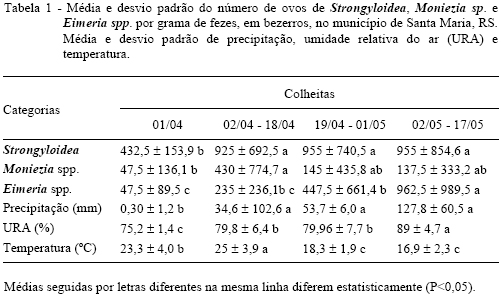The objective of this work was to correlate climatic and parasitological data from laboratory and field samples. The experiment was executed from March to June of 2004, using 110 naturally infected five months old calves. The counting of eggs per gram of feces (EPG), fecal culture and the number of larva on pasture was evaluated every 15 days in relation to decidual climatic data. The EPG increased during the study. The same observation occurred with the pluviometric level. Coproculture revealed the presence of 60% of Trichostrongylus spp. and 40% of Cooperia spp. as well as Moniezia spp. and Eimeria spp. oocists. The temperature during all the experimental periods was favorable to infecting larvae survival and development on pasture. The area with higher larvae count had the higher dry matter of "capim arroz" (Echinochloa spp.). It can be concluded that in optimal climatic conditions, there is a rapid pasture contamination with infecting larvae after the naturally contaminated animals are transferred to the area after corn harvest.
parasites; epidemiology; climatic factors

